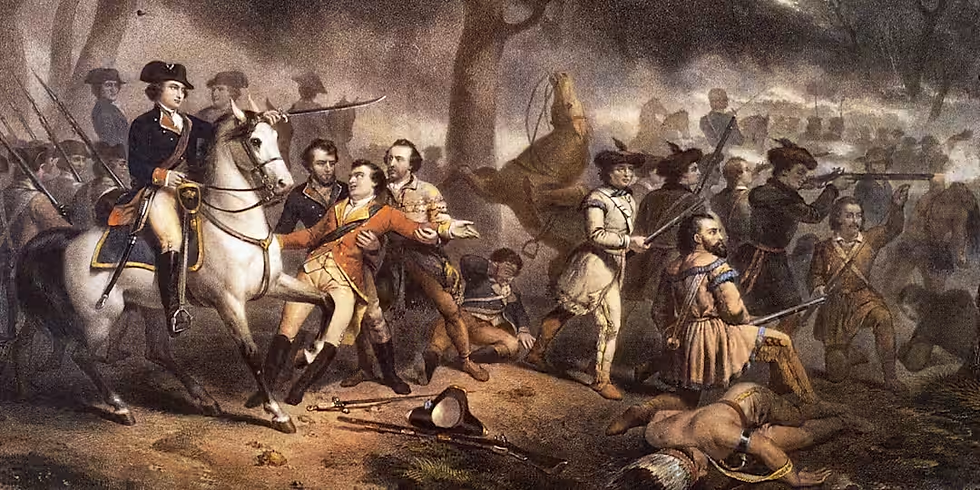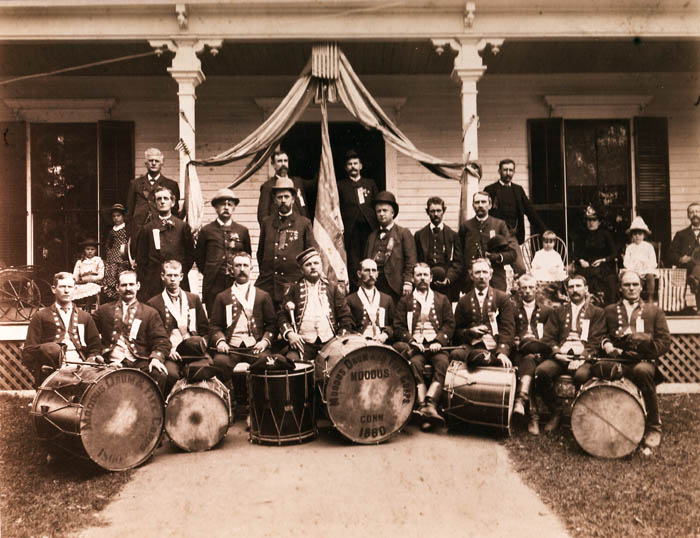The Building of Reverend Noah Merrick’s House on Wigwam Hill
- David Bourcier
- Nov 7
- 4 min read
Updated: Dec 11
In June of 1740, a petition was presented to the General Court requesting that the Outward Commons of Springfield be established as the Fourth Precinct of the town. Governor Jonathan Belcher approved the request on January 6, 1741, though the final grant differed slightly from the original proposal. It excluded the First Division and that portion of the Second Division lying north of the Chicopee River, land that would later become part of Ludlow. The new precinct included all lands south of the river, encompassing what are now the towns of Wilbraham and Hampden.
The first precinct meeting took place on March 12, 1741, at the home of David Merrick, still standing today at 515 Main Street in Wilbraham. At a follow-up meeting held on April 17, the residents voted to invite Mr. Noah Merrick to serve as their first minister. He accepted on May 26, agreeing to a yearly salary of one hundred pounds and a parsonage with land drawn from the Middle Division.
On May 4, 1742, the precinct voted to build Reverend Merrick’s house on Wigwam Hill, part of the “Over Plus Land” of the Middle Division, now 1347 Tinkham Road. Construction began soon after, and by the end of that same year, the minister’s home was completed. Records from a precinct meeting on May 14, 1742, list the men who contributed labor, materials, and teams to the project, along with the amounts they were paid.
The record reads, “The following grants were made to defray the charges of building Rev. Noah Mirick’s house made in the old tenor.” Among those listed were Aaron and Stephen Stebbins, Paul Langdon, David and Thomas Merrick, Samuel and Moses Bartlett, Nathaniel Bliss, Phineas Chapin, Daniel Warner, and Nathaniel Warriner. Each contributed days of hard work or the use of oxen and tools. It is believed that the value of each man’s labor was credited toward his taxes; if it exceeded that amount, he received the balance in cash.
That the home was completed in roughly six months was a remarkable achievement, a testament to the settlers’ unity and determination. Though no description of the house survives, it was likely a well-built and comfortable dwelling, suitable to Reverend Merrick’s position as the community’s first spiritual leader. Many families in the area were by then constructing substantial homes, some of which still stand today, yet the parson’s house atop Wigwam Hill held a special distinction: it was both a residence and a symbol of the new community’s faith and cooperation.
Two years later, on October 17, 1744, Reverend Merrick married Abigail Brainard of Haddam, Connecticut. As she journeyed to Wilbraham, she brought with her several cuttings from a cherished rose bush that had long grown in her family’s garden. Upon settling into the new parsonage, she planted them by the door, where they flourished in the rich soil of Wigwam Hill. Over time, she shared slips of the rose with friends and parishioners, and its descendants spread throughout the village. Generations later, these blooms were still affectionately known as “the Parson’s Rose.”
One early Wilbraham resident recalled:
“The story was first told to me when I was a child by my great-aunt, who, in her youth, had been a near neighbor of Mrs. Merrick. I had long forgotten it until, many years later, a lady of our town handed one of my family a bouquet of roses and said, ‘Those are the Parson’s Rose.’”
Today, two features from Reverend Merrick’s homestead still survive, preserving his memory in quiet and humble ways. One is a simple flat piece of brownstone that once served as the back doorstep of his home. It now rests in one of the flower gardens at the Old Meeting House Museum, a silent witness to nearly three centuries of Wilbraham’s history.

One can almost imagine the scenes that old stone once beheld, the parson stepping out on a Sunday morning to make his way to the Meeting House, which stood just south of this door; the laughter of children playing in the yard; and the steady rhythm of family life passing over its well-worn surface.
After Reverend Merrick died in 1776, the stone was moved to the home of his son, Dr. Samuel Fisk Merrick, at 603 Main Street, where it continued as a doorstep for three generations. In 1930, it was relocated to the Merrick farm at 651 Main Street, where Charles L. Merrick, the fifth generation, placed it at his own back door. In 1982, Charles donated the stone to the Atheneum Society of Wilbraham, ensuring its preservation as a tangible link to the town’s earliest days.

The other surviving relic of Reverend Merrick’s homestead remains at its original site on Wigwam Hill, a portion of the old stone wall that once bordered his garden.

As for the house itself, its ultimate fate is uncertain. Local accounts suggest that, long after it was abandoned, wild animals made their dens within its walls. Thus ended the life of what had once been a proud and bustling parsonage, its stones and timbers giving way to time, yet its spirit enduring in the faith, roses, and memories it left behind.




Comments